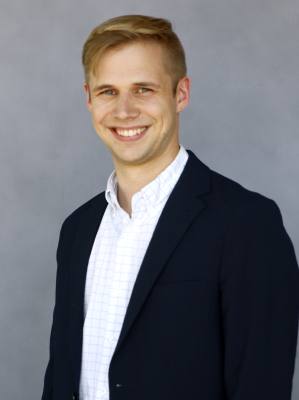The news conference used a pink line stretching to the alley behind Stars Cafe to demonstrate how wide the interstate would expand and the potentially fatal implications for businesses that fall within the project’s scope.
“Any way you look at it, we’re the sensible option, we’re the prudent option, and TxDOT’s expansion is the crazy radical proposal,” said Adam Greenfield, co-founder of Rethink35.
Rethink35 proposes to turn I-35 through downtown Austin into a boulevard. Other proposals include Reconnect Austin, a proposal to put I-35 below ground from Airport Boulevard to Lady Bird Lake, and the Urban Land Institute’s plan to build wide bridges and decks to create connectivity across I-35.
Greenfield said that while Rethink 35 does not perfectly align with the other community proposed plans, the groups are united in opposing the TxDOT plan.
The news conference took place a day after Austin City Council heard from TxDOT Austin District Engineer Tucker Ferguson and Austin Transportation Department Director Robert Spillar about the proposed project.
TxDOT’s plan would expand the highway to 20 lanes, which would include managed lanes. It would also leave open the possibility of incorporating the bridges and decks proposed by the Urban Land Institute, though it is unclear who would pay for them.
During the meeting, Ferguson said that managed lanes for high-occupancy vehicles and public transit could improve mobility. However, he acknowledged that the project would not necessarily solve congestion problems in downtown Austin.
“We're not pretending to say that the expansion that we're proposing is building our way out of congestion,” Ferguson said. “It's moving more people than vehicles. You have to be an HOV or a transit vehicle to be in the [managed] lanes. We expect and hope that some of the vision of the city of people carpooling and vanpooling and ride-sharing would take advantage of those because those lanes will be more reliable.”
During the news conference at Stars Cafe, Council Members Natasha Harper-Madison, Paige Ellis, Kathie Tovo and Greg Casar took issue with several elements of the TxDOT plan, including how it does not sufficiently address environmental concerns, could do more to connect East and West Austin, and its potential impact on residents and businesses near the highway.
Tovo represents the Cherrywood neighborhood, which could see several businesses, including Stars Cafe and Esceulita del Alma day care center, removed as a result of the project.
“We want to get a roadway design that minimizes the impact on the surrounding area,” Tovo said. “We want to see one that really focuses and prioritizes pedestrians and cyclists.”
Around 25 concerned Cherrywood residents and business owners also showed up with signs referring to I-35 as a “scar” and demanding that the project not exceed I-35’s current width and height.
Paula Smith, a lifelong Austinite, bought her Cherrywood home in 2018, which sits two blocks east of I-35, because she liked the neighborhood and could afford it. She said that she knew construction on I-35 was likely to happen, but the scope of TxDOT’s proposal surprised her.
“Even if they keep I-35 and they don't go all the way around, and they don't make it into some beautiful boulevard, there has to be a happy medium,” Smith said. “There has to be something that is better than what they have, which is basically as bad as it can be; it's like everyone's worst nightmare.”
Members of the coalition also drew attention to how the project factors into climate change and Austin’s segregated past.
“We must acknowledge the long-standing disproportionate racial and economic impacts exacerbated by the original construction of I-35, which created permanent state-funded infrastructure to support not only Jim Crow but segregationist policies,” said Yasmine Smith, People United for Mobility Action chair.
TxDOT extended its public comment period, so members of the public can provide feedback through Sept. 24.





